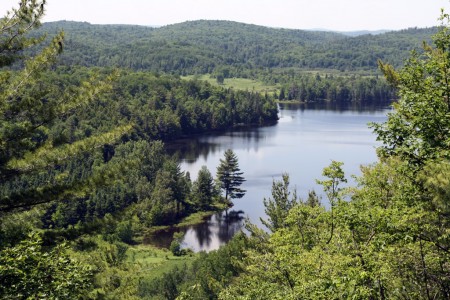
Stephanie Cooke’s In Mortal Hands: A Cautionary History of the Nuclear Age is a four hundred page account of the major problems with the global nuclear industry, both civilian and military. It argues that the costs associated with both nuclear weapons and nuclear energy have been hidden by self-interested governments and organizations, and that nuclear energy should not be part of our future energy mix, despite concerns about climate change and energy security. The book’s unceasingly critical position leaves one longing for a more comprehensive account, where arguments in favour of nuclear energy would at least be more comprehensively rebutted. Nonetheless, Cooke’s book does a good job of reminding the reader of the many special dangers associated with nuclear energy, and the risks associated with re-embracing it, due to our concerns about fossil fuels.
In Mortal Hands argues convincingly that most of the costs associated with nuclear energy are hidden, and not borne by the utilities that provide it or the people that use it. These costs include wastes, contaminated sites, decommissioning of plants and related facilities, risks of accident, nuclear proliferation, providing targets to enemies and terrorists, routine radioactive emissions, the redirection of capital and expertise from potentially more positive uses, and the further entrenching of secrecy and self-serving pro-nuclear entities within government and industry. Certainly, the issue of secrecy is an important one. Along with concealing costs and subsidies, it is demonstrated that the nuclear industry has misled policy-makers and the public about the risks associated with the technologies, timelines and costs associated with the emergence of new technologies like reprocessing and ‘breeder’ reactors, and the number and severity of nuclear accidents. The industry knows that another Chernobyl or Three Mile Island could undue their anticipated ‘renaissance,’ so they are arguably less likely than ever to disclose accurate information on dangers, or on incidents which do occur. Governments that authorize, encourage, and fund new nuclear facilities will be in a similar situation, in terms of the harm awareness of risks and accidents could do to them politically.
Cooke raises a number of important points about regulation, both nationally and internationally, and the conflicts that exist between commercial pressures to get reactors sold and keep them running and concerns about safety and proliferation. None of the big nuclear states has a good record on preventing sales to states secretly working on nuclear weapons. Lack of toughness on the part of international and national regulators is a major reason why countries like Israel, South Africa, and North Korea have been able to use the cover of civilian nuclear programs to get themselves nuclear weapons. Lack of rigour is also clearly evident in nuclear programs, in terms of making sure facilities have been built and operated properly, bombs are secure, and the massive contamination is avoided.
The book is arguably weakest in its discussion of technical matters, which are not discussed at great length or in a way that seems entirely credible and convincing. Opportunities to elaborate and justify claims made about technical matters are often missed, and the book includes at least a few claims that seem likely to be erroneous. For instance, Cooke misrepresents where most of the energy in a thermonuclear explosion comes from, and fails to point out that the START-II agreement never went into effect. More than a discussion about the physics and engineering of nuclear technology, this book focuses more on the regulatory, political, and economic aspects. While that might annoy those with more technical inclinations, it is probably the right approach for a volume with the ultimate intention of informing public policy choices about whether to use nuclear energy for electricity production.
Cooke’s response to the question of how the energy currently being provided by nuclear plants could be replaced is especially unsatisfying. Essentially, it is: “Wind energy is growing very quickly, and perhaps distributed microgeneration could be the solution.” Some consideration of scale, such as that provided by David MacKay, is essential here. Small wind turbines on the roofs of houses as not a viable alternative to gigawatts worth of reactors. At the very least, those who advocate using renewables in place of nuclear need to recognize the enormous scale of deployment that would require, and the various associated costs. While Cooke’s book does not provide a sufficiently broad-minded basis for reaching a final judgment on nuclear energy, it is a convenient antidote to some of the current industry messaging that new plants will be safe and cheap, proliferation isn’t much of a concern, and even Chernobyl wasn’t so bad.





